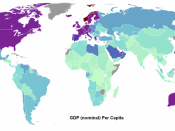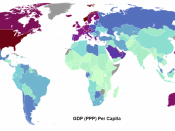According to OXFAM, gloabalisation is a process of economic integration driven by the liberalisation of trade, investment and capital flows and by rapid technological change. Some people believe that globalisation is a good thing as it brings the world market together and creates chance for those in LEDC as without the MEDC would perhaps suffer.
It is true that globalisation has promoted the trade between countries and some advanced technologies and skilled labours might have a chance to be put in help with the ones in LEDCs. However, the existance of globalisation is still a question mark. Along with the so called free trade among the modern world economies, some protectionisms also occur as a side effect which does not necessarily allow free trade to take place. Embargo, which is a total ban on trade that may be imposed fro outside the country or by a domestic government itself.
The most famous one would be the US and Cuba. US and Cuba have an economic embargo on each other that they do not proceed any trading or bilateral activities together. Embargo impedes the import of more advanced technologies and skills from MEDCs like the US. However, the US wouldn't suffer much from this as it has the most GDP and the second highest GDP per capita in the world, lots other LEDCs would export primary and secondary goods to it such as China, Thailand and India, etc. What really suffers from this is again the people from LEDCs. Tarrifs and quotas are also other forms of protectionisms. Tarrifs are taxes on imports whereas quotas are the physical limits imposed upon the amount of goods that might be imported. Tarrifs and quotas seem to be reasonable to a country's need, however, it hurts the exporting countries a lot when...


